Modules:ResampleVolume-Documentation-3.4
Return to Slicer 3.4 Documentation
Module Name
Resample Volume
General Information
Module Type & Category
Type: CLI
Category: Filtering
Authors, Collaborators & Contact
- Author: Bill Lorensen
- Contact: bill.lorensen at gmail.com
Module Description
Resampling an image is a very important task in image analysis.It is especially important in the frame of image registration. This module implements image resampling through the use of itk Transforms. This module uses an Identity Transform. The resampling is controlled by the Output Spacing. 'Resampling' is performed in space coordinates, not pixel/grid coordinates. It is quite important to ensure that image spacing is properly set on the images involved. The interpolator is required since the mapping from one space to the other will often require evaluation of the intensity of the image at non-grid positions. Two interpolators are avaliable: linear and sinc. The sinc interpolator, although more precise, is much slower than the liner interpolator.
Usage
Examples, Use Cases & Tutorials
- Note use cases for which this module is especially appropriate, and/or link to examples.
- Link to examples of the module's use
- Link to any existing tutorials
Quick Tour of Features and Use
List all the panels in your interface, their features, what they mean, and how to use them. For instance:
- Input panel:
- Parameters panel:
- Output panel:
- Viewing panel:
Development
Dependencies
Other modules or packages that are required for this module's use.
Known bugs
Follow this link to the Slicer3 bug tracker.
Usability issues
Follow this link to the Slicer3 bug tracker. Please select the usability issue category when browsing or contributing.
Source code & documentation
Source Code: ResampleVolume.cxx
XML Description: ResampleVolume.xml
Usage:
./ResampleVolume [--processinformationaddress <std::string>] [--xml]
[--echo] [-i <linear|sinc>] [-s <std::vector<float>>]
[--] [--version] [-h] <std::string> <std::string>
Where:
--processinformationaddress <std::string>
Address of a structure to store process information (progress, abort,
etc.). (default: 0)
--xml
Produce xml description of command line arguments (default: 0)
--echo
Echo the command line arguments (default: 0)
-i <linear|sinc>, --interpolation <linear|sinc>
Sampling algorithm (linear or sinc) (default: linear)
-s <std::vector<float>>, --spacing <std::vector<float>>
Spacing along each dimension (0 means use input spacing) (default: 0,0
,0)
--, --ignore_rest
Ignores the rest of the labeled arguments following this flag.
--version
Displays version information and exits.
-h, --help
Displays usage information and exits.
<std::string>
(required) Input volume to be resampled
<std::string>
(required) Resampled Volume
Description: Resampling an image is a very important task in image
analysis.It is especially important in the frame of image registration.
This module implements image resampling through the use of itk
Transforms. This module uses an Identity Transform. The resampling is
controlled by the Output Spacing. 'Resampling' is performed in space
coordinates, not pixel/grid coordinates. It is quite important to ensure
that image spacing is properly set on the images involved. The
interpolator is required since the mapping from one space to the other
will often require evaluation of the intensity of the image at non-grid
positions. Two interpolators are avaliable: linear and sinc. The sinc
interpolator, although more precise, is much slower than the liner
interpolator.
Author(s): Bill Lorensen
Acknowledgements: This work is part of the National Alliance for Medical
Image Computing (NAMIC), funded by the National Institutes of Health
through the NIH Roadmap for Medical Research, Grant U54 EB005149.
More Information
Acknowledgment
This work is part of the National Alliance for Medical Image Computing (NAMIC), funded by the National Institutes of Health through the NIH Roadmap for Medical Research, Grant U54 EB005149. Information on the National Centers for Biomedical Computing can be obtained from National Centers for Biomedical Computing.
